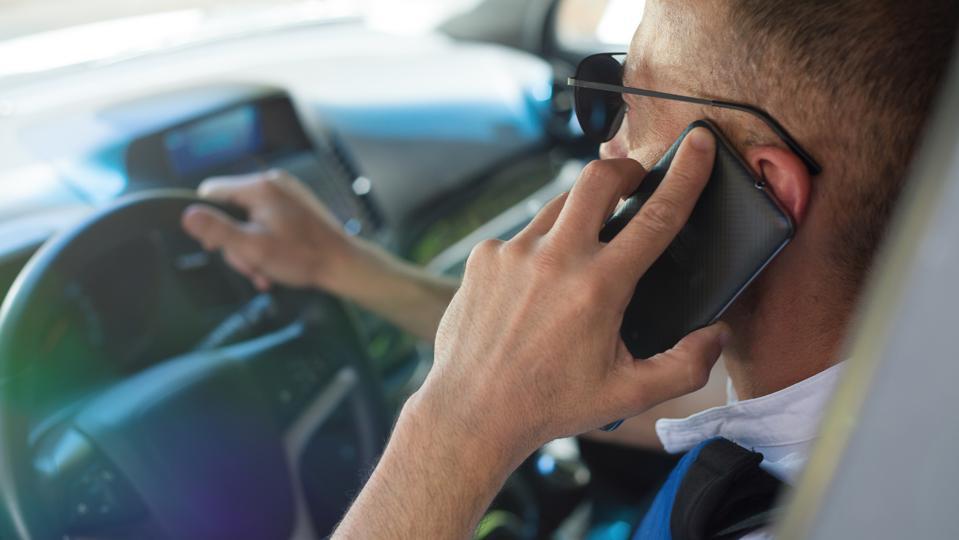Driving while distracted has been a problem for as long as there have been automobiles to drive in. While the advent of cell phones and mobile devices may have intensified the problem, they hardly caused it — fishing for dropped items, tending to children, holding conversations, and many other things can take a driver’s attention off the road. But driving while distracted can pose a major risk to public safety, and has gotten even worse in recent years. So what have state and federal laws done to address this risk, and what can drivers do to help lessen it?
What Constitutes Distracted Driving?
As mentioned above, plenty of things can distract you while driving — technically, anything that takes your attention away from the immediate environment likely counts. But according to a recent distracted driving survey by Susan Meyer of insurance comparison site The Zebra, there are some leading culprits:
Talking on the phone. 60% of drivers admit to phone conversations while behind the wheel.
Eating and drinking. 59% of drivers admit to consuming food or beverages while driving, which is equally as hazardous as talking on the phone.
Adjusting a GPS device. 57% of drivers have confessed to adjusting a GPS while on the road, which often requires taking one’s eyes off the road and hands off the wheel.
Other common distractions include applying makeup, using a mobile app, sending and receiving texts, or taking a photo or video. What’s more, the majority of drivers admit to doing these things even knowing they’re a safety hazard.
Distracted Driving’s Impact on Safety
The statistics surrounding distracted driving are no laughing matter. According to the National Highway Traffic Safety Administration (NHTSA), over 3,100 vehicular fatalities in 2020 alone came as a result of distracted driving. Further, the NHTSA estimates that 20% of injury crashes involve distracted driving in some way — and distracted driving overall has risen by nearly 30% in the last three years.
State Laws Against Distracted Driving
Despite the dangers posed by distracted driving, there’s currently no law against it on the federal level. But most states have enacted their own measures to combat distracted driving, mostly centered around the use of mobile devices.
California, for instance, enforces a complete ban on handheld devices and promises strict penalties for drivers who violate that ban. This includes texting while driving. New York also has strict laws against texting and use of handheld devices behind the wheel. Oregon is known for having some of the most rigorous laws against handheld devices, with increasingly dire penalties for repeat offenders.
But not every state has laws against distracted driving. Missouri, for instance, has no statewide ban on handheld devices for drivers over 21, although a ban is in effect for drivers under 21. Montana has no specific state laws against texting and driving at all, though some laws may apply within city limits.
Federal Regulations
While, again, there is no national law against distracted driving, there are some federal initiatives aimed at reducing distracted driving and promoting road safety. These campaigns are led by both the US Department of Transportation (DOT) and the NHTSA, and include programs like:
“U Drive. U Text. U Pay.” This enforcement campaign combines advertising and increased law enforcement to more effectively deter people from texting while driving.
National Distracted Driving Awareness Month, which occurs in April, is focused on educating the public about the dangers of distracted driving.
“Stop the Texts, Stop the Wrecks” is much like the “U Drive” program, but specifically aimed at young drivers, focusing on the use of digital platforms such as social media to highlight the dangers of distracted driving.
How to Avoid Distracted Driving
It’s not enough to depend on laws and regulations to reduce the frequency of distracted driving — it’s also important to lead by example and put your own safety first. Here are a few common strategies for avoiding distractions:
Put away your devices while driving, and turn them off entirely (or put them in Do Not Disturb mode) if practical. Modern phones often have a feature that will turn on Do Not Disturb whenever the car is in motion.
Plan ahead, setting your GPS and climate settings before you even put the car in drive. This means less chance you’ll end up playing with the controls later.
Eat and drink before you drive, and consider pulling over at a safe place to eat rather than snacking on the road. If you must eat or drink while driving, consider snacks and drinks that require a minimum of distraction to open and enjoy.
Talk to your passengers about the importance of minimizing distractions, especially if you have children or rowdy teens in the car.
Stay focused and vigilant at all times when on the road, and if you feel yourself getting tired or having trouble focusing, pull over and take a break.
